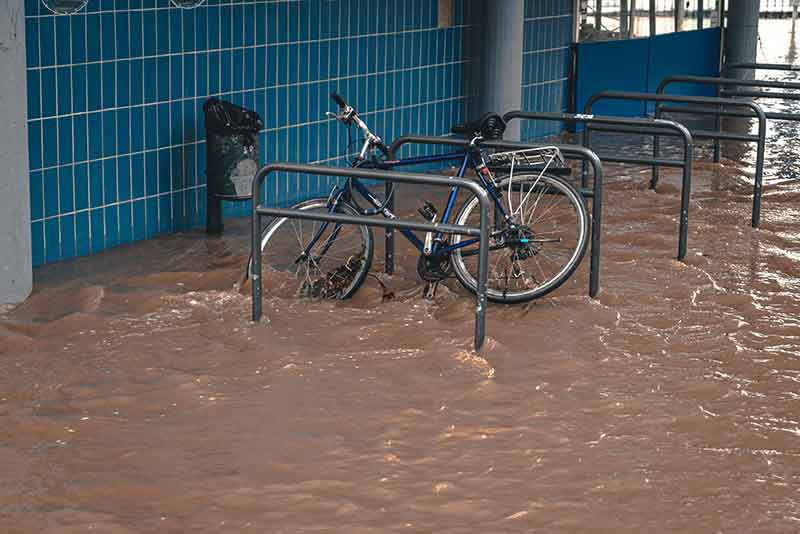Measuring Atmospheric Data: A Historical Perspective and Record Rainfall Examples
Jose Mier is no meteorologist for Sun Valley, CA, but he spent the last few days trying to keep dry as we experiences the largest rainfall amount in over 100 years. Local news outlet KTLA has some data on the total amounts.

Introduction: Understanding and measuring atmospheric data has been a crucial aspect of human civilization, aiding in various fields such as agriculture, navigation, and disaster preparedness. Over the years, technological advancements have revolutionized the way we collect and interpret atmospheric information. This article explores the historical development of measuring atmospheric data and provides examples of record rainfall events that highlight the significance of accurate weather monitoring.
Early Attempts at Atmospheric Measurement: Ancient civilizations recognized the importance of observing the sky and atmospheric conditions for agricultural and navigational purposes. However, it wasn’t until the 17th century that more systematic efforts to measure atmospheric parameters began. Evangelista Torricelli’s invention of the mercury barometer in 1643 marked a pivotal moment. This device allowed for the measurement of atmospheric pressure, providing insights into changes in weather patterns.
As time progressed, the development of thermometers, hygrometers, and other instruments enhanced the ability to collect more comprehensive atmospheric data. In the 19th century, meteorological observatories, such as the one established by James Glaisher in the UK, contributed significantly to the systematic collection of weather observations.
The Birth of Meteorological Institutions: In the United States, the Smithsonian Institution’s Meteorological Project, initiated in 1849, played a crucial role in the systematic recording of weather data. Volunteers across the country contributed daily observations, forming a nascent network that laid the foundation for more comprehensive weather monitoring.
The Weather Bureau Act of 1870 established the U.S. Weather Bureau, a precursor to the National Weather Service (NWS). This marked a formalized effort to centralize and expand the collection of atmospheric data. Advances in telegraph communication facilitated the rapid transmission of weather information across the nation, enabling more timely and accurate weather predictions.
Technological Advancements: The 20th century witnessed a leap in technological innovations for measuring atmospheric data. Radiosondes, which are instruments carried aloft by balloons to collect data on temperature, humidity, and pressure at various altitudes, became widely used. Radar technology emerged, allowing meteorologists to track precipitation and storms in real-time. Satellites revolutionized global weather monitoring, providing a bird’s-eye view of atmospheric conditions.
In recent decades, sophisticated computer models and data assimilation techniques have enhanced our ability to predict and understand complex atmospheric phenomena. Supercomputers process vast amounts of data, enabling more accurate and detailed weather forecasts. The integration of these technologies has led to improved early warning systems for severe weather events, contributing to public safety and disaster preparedness.
Record Rainfall Events: Record rainfall events serve as poignant examples of the importance of measuring atmospheric data. These extreme weather occurrences can have significant consequences, including floods, landslides, and disruptions to ecosystems. Here are a few notable examples:
- Hawaii, 1950: In 1950, Hurricane Hiki struck the island of Kauai in Hawaii, causing widespread devastation. The storm brought an astonishing 52 inches of rainfall in just 24 hours, setting the U.S. record for the highest rainfall in a single day. The catastrophic flooding highlighted the vulnerability of island communities to intense rainfall associated with tropical cyclones.
- India, 2019: The state of Kerala in southwestern India experienced unprecedented rainfall during the 2018 monsoon season. In August 2018, heavy rains led to severe flooding, with some areas receiving more than 40 inches of rainfall in a span of two days. The event underscored the challenges posed by extreme precipitation in densely populated regions, emphasizing the need for accurate forecasting and early warning systems.
- Louisiana, 2016: In August 2016, parts of Louisiana were inundated with heavy rainfall, leading to widespread flooding. The town of Watson received nearly 32 inches of rain over a 15-hour period. The event demonstrated the vulnerability of low-lying areas to intense and prolonged rainfall, prompting discussions on the increasing frequency of such extreme weather events in a changing climate.
- Japan, 2018: Typhoon Prapiroon brought heavy rainfall to southwestern Japan in July 2018. The town of Uwajima recorded over 26 inches of rainfall in a single day, leading to landslides and flooding. The event highlighted the susceptibility of mountainous regions to excessive rainfall, showcasing the need for accurate forecasting to mitigate the impacts of such events.
Conclusion: The history of measuring atmospheric data reflects humanity’s ongoing efforts to understand and predict weather patterns. From humble beginnings with barometers and thermometers to the sophisticated technologies of today, the evolution of meteorological instruments has been instrumental in advancing our understanding of the atmosphere.
Record rainfall events serve as poignant reminders of the challenges posed by extreme weather conditions. As climate change continues to influence weather patterns, the accurate measurement and interpretation of atmospheric data become increasingly critical. The lessons learned from historical events, combined with cutting-edge technologies, position us to better adapt and respond to the complex and dynamic nature of our planet’s atmosphere.